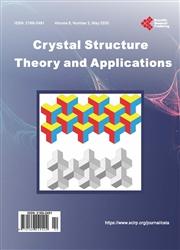Docking of Human Heat Shock Protein 90 with Selenoderivatives of Geldanamycin
引用次数: 4
Abstract
The interference of human heat shock protein 90 (HSP90) in many signalling networks associated with cancer progression makes it an important drug target. In the present work, we investigated the binding ability of 9 selenoderivatives of geldanamycin (GMDSe) at the N-terminal domain of HSP90 derived from Protein Data Bank (PDB code: 1YET) based on ligand-protein docking. All selenoderivatives interacted positively with HSP90, yet the binding strength decreased when replacing monovalent oxygen in position 1 (GMDSe1) or 9 (GMDSe9). Hydrogen-bonding and lipophilic interactions between selenoderivatives and amino acid residues in the inhibitor site of HSP90 were thermodynamically the main forces driving the binding stability. Molecular electrostatic potential surfaces of the selenoderivatives showed marked non polar areas, which were probably involved in the lipophilic interactions with the hydrophobic residues of amino acids. Interestingly, the amino acid residues forming the hydrogen bonds with GMD were also involved in the hydrogen-bonding interactions with the selenoderivatives. Moreover, HSP90 interacted with the GMDSe6 and GMDSe7 selenoderivatives stronger than with GMD, while maintaining lipophilic interactions and hydrogen bonds with amino acid residues like Asp93, which are catalytically crucial for therapeutic properties of HSP90 inhibitors. This finding should guide further studies of pharmacophore properties of GMD selenoderivatives in order to explore their therapeutic properties. It is noteworthy that selenium has been suggested to reduce the risk of various types of cancers.人热休克蛋白90与格尔达霉素硒衍生物的对接
人类热休克蛋白90(HSP90)在许多与癌症进展相关的信号网络中的干扰使其成为重要的药物靶点。在本工作中,我们基于配体-蛋白质对接,研究了9种格尔达霉素(GMDSe)选择性抑制剂在蛋白质数据库(PDB代码:1YET)衍生的HSP90 N端结构域的结合能力。所有硒衍生物都与HSP90呈正相互作用,但当取代位置1(GMDSe1)或9(GMDSe9)的单价氧时,结合强度降低。硒衍生物与HSP90抑制剂位点氨基酸残基之间的氢键和亲脂性相互作用是热力学上驱动结合稳定性的主要力量。硒衍生物的分子静电势表面显示出明显的非极性区域,这可能与氨基酸疏水残基的亲脂性相互作用有关。有趣的是,与GMD形成氢键的氨基酸残基也参与了与硒衍生物的氢键相互作用。此外,HSP90与GMDSe6和GMDSe7硒化物的相互作用比与GMD的相互作用更强,同时与Asp93等氨基酸残基保持亲脂性相互作用和氢键,这对HSP90抑制剂的治疗性能至关重要。这一发现应指导进一步研究GMD硒代衍生物的药效团特性,以探索其治疗特性。值得注意的是,硒被认为可以降低各种癌症的风险。
本文章由计算机程序翻译,如有差异,请以英文原文为准。
求助全文
约1分钟内获得全文
求助全文

 求助内容:
求助内容: 应助结果提醒方式:
应助结果提醒方式:


